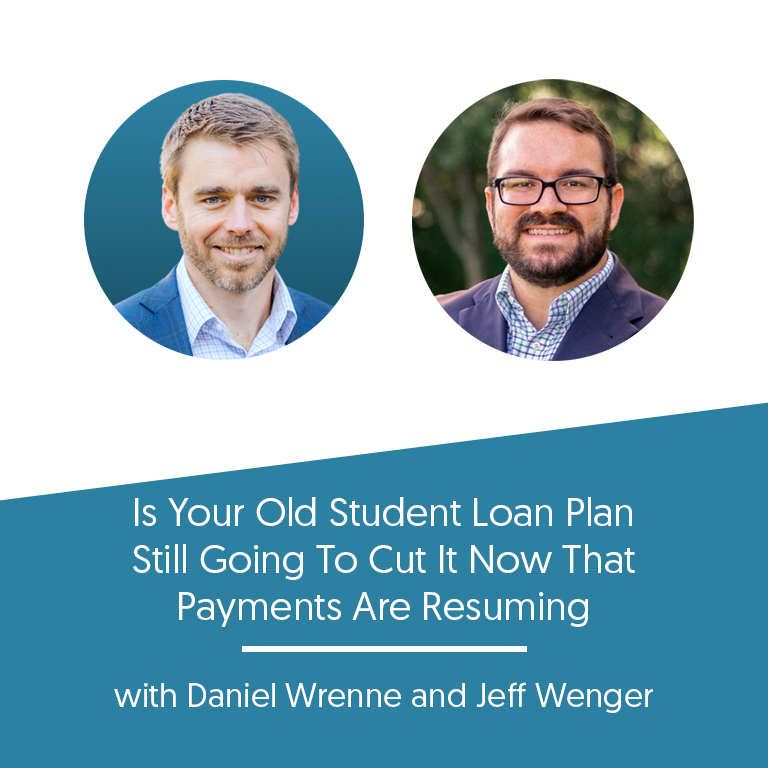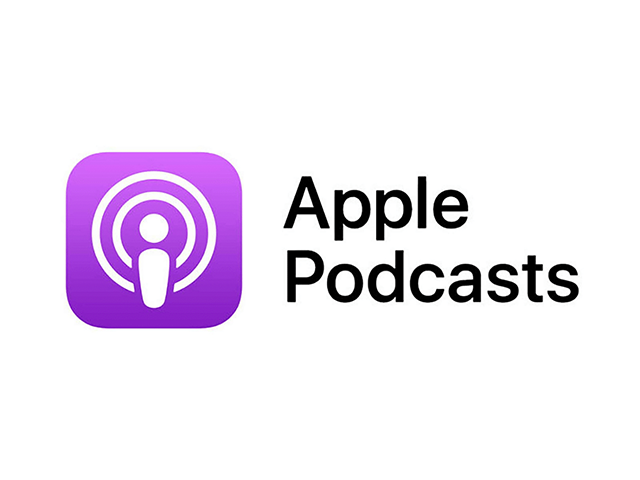Join Daniel Daniel Wrenne and Jeffrey Wenger as they navigate the complex landscape of student loan repayment strategies in this episode!
With a focus on helping physicians, particularly those working with Public Service Loan Forgiveness (PSLF) in mind, Daniel and Jeff take you on a journey through the recent changes in student loan policies. They explore the historical approaches to student loans and delve into how the transition to the new SAVE Plan (Saving on a Valuable Education Plan) can impact your financial future.
Discover the intricacies of student loan management and gain insights into crafting a tailored repayment strategy that suits your unique circumstances. Daniel and Jeff bring their expertise to the table, making the complex world of student loans more understandable and helping you make informed decisions.
Whether you’re a recent graduate, a seasoned borrower, or just interested in the world of student loans, this episode provides valuable insights into the ever-changing student loan landscape.
P.S. We value your opinion! Share your thoughts and insights with us. Your feedback helps us improve and tailor our content to your needs. Click here to give us a piece of your mind.
Links:
To schedule a call with one of our awesome planners, book HERE.
Full Episode Transcript:
Daniel: Jeff, what’s up, dude? Hey, Daniel. How have you been? I’m doing good. We were just talking about our strategy for today. We’re going to talk some student loan stuff and you have, uh, your trustee abacus, in case we get into the weeds. Have you talked about your abacus on the podcast? No, I don’t think
Jeff: I’ve
Daniel: ever spoken about the abacus, but this is how Jeff does financial planning and student loan analysis.
Jeff: I was actually going to say, this is how your servicer calculates your income driven plans. And that’s why it takes so long to talk to Nela or Nelnet or anything like that.
Daniel: They grab their abacus and crunch. Apparently you can do calculations on that thing. Yeah,
Jeff: I could do addition slower than I can on a calculator.
So it’s a real time saver there.
Daniel: Yeah. Well, it looks cool. Well, so we’re going to talk. Again, I know we, we covered this. I guess it came out a few weeks ago in a prior show, where we talked [00:02:00] about some of the big changes that are going on with student loans. And today we’re going to recap a little bit of those.
Changes from a high level standpoint. definitely if you want to go check that out, we go into a little bit more depth on, some of the latest changes link to that in the show notes, if you want to dig into those. So today we’re going to recap on some of those changes that have happened recently.
And then also talk about how that compares to kind of the way things were before. and I think we’ll get in, we’ll start to get into how that might affect your strategy. Cause that’s at the end of the day, that’s what we’re going for. We’re trying to make sure you have a good strategy. For your student loans, based on all these changes, we’ll probably like parse this out in a few different episodes.
we don’t want to throw too much at you all at once. but I think the big thing is we’ve had this long period of time where like. You didn’t really need to have a plan for your student loans. in some ways that was kind of nice. Like there was nothing going on. you know, you were not responsible for payments period.
and even if you didn’t [00:03:00] make these payments, technically they counted as payments and they qualified for PSLF. And, if you were going for that and there was no interest being charged, I mean, it was kind of a sweet. Set up there for a really long time where there was really, not much responsibility and really no need to have a plan, like all these plans we had made, we work with people individually, one on one and help make these plans.
and a lot of those plans we made were like. Became irrelevant because of all, you know, this COVID forbearance and all these things. It kind of like put us in this mode of like, let’s play it by ear. See how things shake out for a long period of time. So I think a lot of people got in this mode of like, I don’t need to have a plan for my student loans or it’s not urgent.
There was not any urgency with student loans. Yeah. I think
Jeff: not even just the forbearance, but that along the way now, things that used to make sense. There have been changes, right? Changes along the way, while you didn’t have to take any action, but a lot of different things that have come up in the last three [00:04:00] years, that now, maybe what you had been planning on doing, doesn’t, I’m not even gonna say it doesn’t make sense, but the landscape has changed and maybe there’s another direction that’s even better than before.
So, I think we’ll get into some of those changes
Daniel: today. It’s like the, it’s like we’re trying to put a puzzle together with these student loans. Um, and basically along the way, all these, Pieces got changed up on us. Like we’re, we’re basically dealing with a completely different puzzle now than we were prior to COVID and it’s very, it’s a very different set up and, and then I don’t know how they framed it, like as they’ve rolled out these new rules.
a lot of times the government frames these things as like simplified or, better for everybody, but in my experience. Anytime these changes roll out, it’s actually a lot more complicated. I think I’m suspicious that this is going to make things a lot more complicated. just based on some of the provisions within these new options that are out there, but we’ll talk about that a little [00:05:00] bit as well.
the main thing though, is, is starting to educate yourself on the new setup. but before we get in the new I wanted to recap on kind of like the old way of doing things. Hopefully, for those of you that have student loans, you’re probably familiar with a lot of this terminology already. And, This is kind of just kind of a quick refresh on what things were before, but, for starters, maybe we can break it down by like the PSLF crowd versus the not going for PSLF crowd.
So that’s kind of, you have federal student loans. And from a planning standpoint, that’s usually the starting point is like, are you going for PSLF or are you not? really we should do three categories. Cause there’s like the maybe PSLF cause, and that’s actually where most people are, right?
Cause you don’t know the future. So most people are in the maybe PSLF and that’s an important category. but some people are in the certain to go for PSLF and some people are in the certain that they’re not going for PSLF. So I think that’s a good [00:06:00] starting point. So like generally speaking, let’s maybe we’ll start with like the certain to go for PSLF crowd, like what was like the high level strategy we would typically see for that, that group of people on average.
Jeff: Yeah. So I would say maybe getting to a couple of basic things here is that there were a couple of different payment plans. you had options that either allowed you to file taxes separately and limit the amount of income being shown for a payment, or you had a payment cap option as well.
And so. There are a couple of different plans there. Sometimes the one that was better interest wise wasn’t as good on the payment cap or the ability to split it. And so that was the old way, right? And a lot of times that meant that the default for somebody going for loan forgiveness was to get on that pay as you earn plan.
Does that sound right, Daniel?
Daniel: Yeah, that was, it was pretty much every single time. if we came to the conclusion that someone was 100 percent certain [00:07:00] going for PSLF. It was a safe recommendation to be like. You should go for payee if you’re able to access it. Now, payee pay as you earn or payee had some like limitations on, like you had to be in it.
you had to have your student loans after a certain date, and there were some, so some people that had older student loans didn’t qualify. But for most people, you know, we’re thinking about this payee, was the go-to for, if you were certain for P S L F, mainly because it had this payment cap like Jeff described.
And you had that option to file separately, which were basically better, especially better, options, especially if you were going for PSLF. and so most people though, in my experience, Jeff’s had a lot of conversations on student loans as well. But like my experience. I would say like, especially if you’re talking to people, you know, if you’re in training, like if you’re in residency, most people are like, well, I might go for PSL if ever, I probably will go for PSL if, but they’re like, but I’m not sure, or they’ll say something like, well, I’m [00:08:00] probably not going to go, but like, I’m not sure.
So that gets into this, like, uncertainty, like, I don’t know if I’m going to go for PSL. In my experience, that’s a majority of people, but that changes the game a little bit, right? Right.
Jeff: And especially if we’re talking pre COVID type planning, that that group, in training fellowship residents, the lean there would be where uncertain revised pay as you earn was the way to go early on.
And the reason for that being that it was a payment plan that was going to offer you basically the same payment as it would in the other plan, the lowest possible payment. for most cases, but it had an interest subsidy that went along with it and that interest subsidy So it was really good for a few years and then afterwards there was anything that was unpaid half of that interest went away So it basically made it, you know, the nice middle ground holding pattern Yeah, or if you weren’t sure yet And then you could always switch back into pay as you were and as long as your income [00:09:00] was low enough By the time you got to that point or as Daniel mentioned, if you had the right combination of loans, like you’re not too old, you’re not too young, you’re just right.
Kind of like Goldilocks and three bears.
Daniel: Yeah. So the net effect of that is like with rate repayee after a stretch of residency or lower income, you ended up with a lower balance on your student loans in repayee than you did with payee. Which if you’re going to have to pay the whole thing off, it’s pretty appealing.
But that goes back to the whole PSLF thing. It’s like, the question is, are you going to have to pay the whole thing off?
Jeff: Right. And so if you were unsure, we would have suggested, you may as well keep that option open because I would rather have the option, you know, when I go to choose my first attending position, to then have 200, 000 forgiven at some point.
Rather than preemptively making a decision to refinance because I didn’t know.
Daniel: Right. Yeah. So repay, it was like the lots of [00:10:00] options, max options available plan. Um, and then you had the crowd that was like, okay, well, I’m certainly not going for PS off.
Jeff: And I think. In that case, the option, the, the leaning there was still at least while we’re in training, let’s consider that income driven repayment plan with that revised pays you earn prime candidate again, because as you had mentioned, your balance is not growing at the same rate.
It would have been effectively the lower interest loan than you would have. And you still have the option for. The leniencies and protections that went with
Daniel: a federal loan. a lot of people pushed for refinance in that category, even in training. I’m glad we didn’t advocate for that. I think that was a good call.
Well, especially in hindsight, because COVID forbearance happened and, that was a far better deal than no interest is better than some interest. So, that repay option leaves that option open. The other thing too, in my experience, I’ve Talked to more than a few people that [00:11:00] said they’re certainly not going for PSLF or they’re 100 percent going for PSLF and then they didn’t.
Jeff: Both
Daniel: directions, right? Yep. So you don’t know, in reality, you don’t actually know for certain one way or the other, cause we’re talking about 10 years or less, but the future is unpredictable. so that was kind of the lay of the land for. The several years leading up to COVID forbearance and then, COVID forbearance hit, and then it was like, I don’t know what we do.
there was a lot of strategy too. We didn’t get into the details, but there was a lot of strategies that kind of like went along with that, like how you did it, but basically COVID forbearance hit and it was like no interest, no payments due, they all count. and we’re like, okay, just hang out and do nothing.
I mean, that was the new strategy, right? Like hang out and do nothing. At least at first it was hang out,
Jeff: do nothing still. I mean, we were still making decisions based on the rules that were in place. but yeah, there was, you know, effectively there was not a whole lot of action. That you would take that would make any [00:12:00] difference.
And as it turned out in the last
Daniel: three years. And it, that drug on for quite a while, and made it difficult to plan for, but it was a nice benefit. Now they came up, they came out with a lot of rules along the way that started. So the decision started to happen, like with these waiver programs. And there was some, there was some extra, there was some benefits that the government started to create.
basically along the lines of like the way that they marketed it was to make good on promises they had made initially with PSOF. So they kind of like simplified qualifications and made it a little easier to, and then they eliminated some of these like consolidation, you lose out on payments issues.
And so there were some steps people took along the way to. Kind of clean up their loans that would have, or even still could be really beneficial, for, your plan. And we’ve talked about those in prior shows as well, like some of these waiver programs in depth. [00:13:00] but those are, those were temporary things.
Some, some of them were temporary things. there was also some permanent changes though, and that, I think that’s where we get into. some of the new strategies that come into play, but, before we talk strategy, like, what are the, the biggest change? I think the save plan is the biggest change going forward.
At least.
Jeff: Yeah. I think, let me go through really quickly chronologically and we’ll just name the change. Oh,
Daniel: you got them all in
Jeff: They are, well, they’re on my fingers in chronological
Daniel: order. He is, he knows his student loans.
[00:14:00]
Jeff: There was the PSLF waiver. That one has come and gone, but it was, it was a, an option that relaxed payments or the credit of payments.
So basically anytime you made a [00:15:00] payment counted, but now that we are in the period of what’s called the IDR one time account waiver or adjustment. And so until the end of the year, this year, 2023. you do have the option of if you certify your employment for something, any payment you’ve made in the past and some options for deferment or forbearance will get credit towards PSLF or for long term forgiveness.
And consolidating loans also helps grant the longest history to all loans. So that’s a real brief synopsis of that one. And then we get into in the last year to in six months, a few changes that are more permanent. And so back in November, 2022, there were some changes announced that, number one, there was going to be a new payment plan.
Details were pretty scarce at that point, but there was also the announcement that employment would be relaxed a little bit. There was the definition of employment for loan forgiveness for PSLF in particular. in, in the most cases, that’s applying to physicians [00:16:00] in Texas and California, and then there’s also the new payment plan.
So those are the major ones that came up here. So those are the three, the ones that, you know, are going to make the most difference going forward are do I need to update my plan based on my employment? You know, does, does that matter now? Does my employment situation become eligible? And then also does the, how does this new payment plan factor into things?
And so I think, does it help to just give a quick synopsis of that payment plan?
Daniel: Yeah, let’s do that. And then we’re going to call it a day after that. And then. In our next conversation, we’re going to get into some of the strategies. So you’ll have to check out that one to get into the strategies.
But for today, for today, we’ll wrap up with going through like what this save plan actually looks like.
Jeff: Perfect. And so, yes, the save plan, saving on a valuable education plan.
S.
A. V. E. Save
And so that is a plan that it has been introduced as of the summer of 2023 here [00:17:00] and effectively It has become the plan will be the lowest payment for most people, lowest payment option for most individuals, and the reason for that being the way payments are calculated, it adds in more of a discount before it factors in payments so that the actual payment calculation is lower.
at this point. All income driven repayment plans, including this new one, allow you to separate income. So there’s no more plan out there that says, Hey, this takes into account the whole household if you’re filing taxes separate, which was an advantage. some of the old plans, right? Where you could do that, but you know, other plans you could, this plan also does not have a payment cap.
So it’s downside. Yes. The downside is there for that. So you can’t, there’s no limit to how high the payments can go, but the payments compared to other plans are effectively lower. And then it counts for PSLF and it has the best interest subsidy of all the plans that are out there right now, [00:18:00] where.
Anything, any unpaid interest that you would have been. That would have accrued is now forgiven. So let’s say, I had 250, 000 in loans and my payment is calculated at 20 a month. that is pretty obviously not going to cover my interest on a loan. If I have a 20 payment on the 200, 000 loan, in that case.
No interest accrues. No interest is charged basically on that. Effectively a 0 percent interest rate. Those are the big things. It can be forgiven after 25 years. So on any, so you know it doesn’t matter for employment there. You pay on it for 25 years. An exciting prospect for most, right? But an option. And then if you happen to be a lucky borrower that took out 12, 000 or less.
Daniel: that
Jeff: doesn’t apply to many but maybe if you had undergrad loans and that’s all you took out you had twelve thousand dollars less those are also forgiven after ten years no matter what your employment is So it’s kind of an interesting
Daniel: plan there. Yeah, so [00:19:00] it’s overall, it’s like 90 of the good things in the old repayment plans and then 10 of the bad things maybe I mean broadly speaking so the I think the big downside is that they you don’t get the payment cap and that might not apply ever in your life.
So if you can calculate that you can back into the income Necessary to cap you out on payments. So you can project out roughly speaking, what’s your specialty, what would hypothetically make, you can start to get an idea of that, whether or not that is in play.
Uh, but if that word is never in play for you, then it’s irrelevant. And it’s basically only improvement. now what if that is in play? Well, we’re starting to get into strategies here, but, because there, there’s a lot of different, like I was saying at the very beginning, like, I think a lot of times these are positioned a little bit oversimplified.
Maybe, I don’t know. It’s like, this is a, improvement on things and it’s, they [00:20:00] make broad sweeping statements. But like, and maybe it is an improvement for 80 percent of people, but like, how do you know if you’re 80 percent and then like, what does it look like? What are the exceptions? And then like, how do I know, if I, if this, this applies to me and what can I do about it?
So we’re going to talk about those a little bit more, next time where we get into some of the strategies that apply to all these new changes. Does that sound like a plan Jeff? Oh, I can’t wait. We got anything else to add before we jump off?
Jeff: Nope. I’m excited to go into strategy next time.
Daniel: Yeah. I like talking about strategy.
That’s that’s, that’s the fun stuff. So we’ll catch up here next time.









